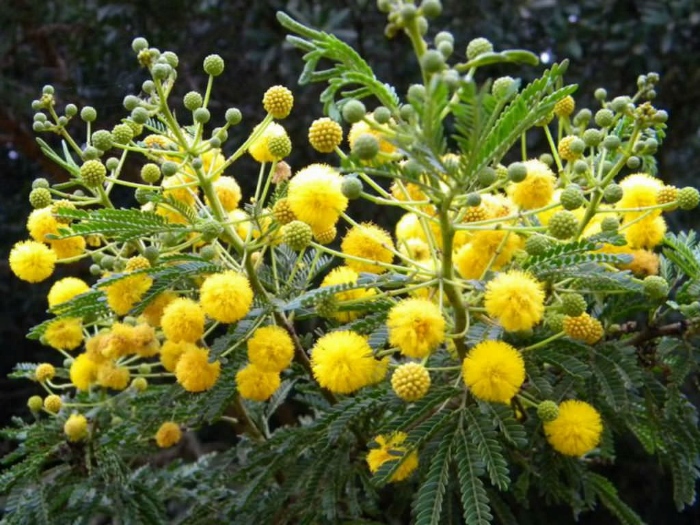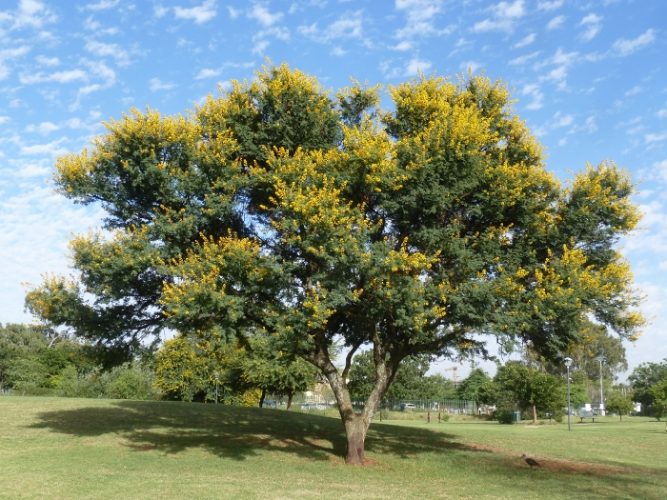In 2021 the common tree of the year is Vachellia karroo (Hayne) Banfi & Glasso. Each year, as part of Arbor Month, two trees, one common and one rare, are highlighted to increase public awareness of indigenous trees.
Known for many years as Acacia karroo, this is one of South Africa’s most beautiful and useful trees.
Description
Vachellia karroo has a rounded crown, branching fairly low down on the trunk. It is variable in shape and size, reaching a maximum of about 12m where there is good water. The bark is red on young branches, darkening and becoming rough with age. Sometimes an attractive reddish colour is visible in the deep bark fissures. The leaves are finely textured and dark green.
The flowers appear in early summer in a mass of yellow pompons. Many insects visit and pollinate these flowers. The seed pods are flat and crescent shaped, sometimes with constrictions between the seeds. They are green when young becoming brown and dry.
The thorns are paired, greyish to white and are long and straight. On mature trees, the thorns may be quite short.
Distribution and habitat
Vachellia karroo grows from the Western Cape through to Zambia and Angola. It is able to grow in a variety of habitats from low lying areas to highveld. It does not, however, favour mist belt and montane areas.
Growing Vachellia karroo

The sweet thorn makes a beautiful garden specimen. The bright yellow flowers look very striking against the dark green foliage. The rough, dark brown bark is also most attractive. The flowers are sweetly scented and are renowned for attracting insects which are essential to any bird garden.
In cold and dry areas the tree will be deciduous. The roots are invasive, so avoid planting near paving or buildings. It is a most useful tree for smallholdings and farms where we can plant it for shade and as a windbreak. The sweet thorn is very adaptable to soil types and is frost and drought hardy. However, for best performance, water well and deeply (shallow, frequent sprinklings only encourage shallow root growth) until established. Plant with plenty of compost, bonemeal or superphosphates (commercial tree tablets also work well). The growth rate is fast, up to 1m per year.
You can grow this tree from seed. Soak the seed in hot water and leave it overnight. You will see if this has been effective as the seed will swell up. Sow the following morning. Seedling trays with seedling mix can be used, or the seeds could be sown directly into black bags. Cover lightly with sand and do not allow to dry out. Germination usually takes 3-12 days. The seedling will transplant well in spite of the long tap root. Wait until they unfurl their second leaves before transplanting.
(Information courtesy Forestry in South Africa)
To read more on trees, go to the horticulture section on our website. To subscribe to SA Smallholder click here.

